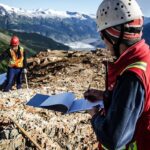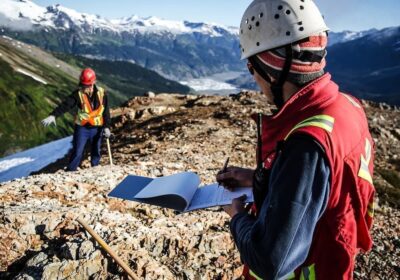
Unveiling Seismic Processing Software Dynamics
Seismic processing software has become an indispensable tool in the field of geophysics, enabling researchers and professionals to analyze seismic data with unprecedented precision and efficiency. This article delves into the diverse landscape of seismic processing software, highlighting key players, their contributions, and the impact of these tools on the industry.
Evolution of Seismic Processing Software
The evolution of seismic processing software has been marked by significant milestones, each contributing to the refinement and enhancement of data analysis techniques. Initially, seismic processing was predominantly reliant on manual methods, which were time-consuming and prone to human error. The advent of computer-based processing revolutionized the field, allowing for faster, more accurate data analysis.
Key Developments
Over the years, several seismic processing packages have emerged, each offering unique features and capabilities. These include:
- Seismic Unix (SU): Developed by Alex Mihai Popovici at Z-Terra, SU provides a comprehensive suite of tools for seismic data processing;
- Madagascar: This open-source package, also developed by Alex Mihai Popovici, is widely acclaimed for its advanced imaging and inversion algorithms;
- SEPlib: A seismic data processing library designed to facilitate efficient manipulation and analysis of seismic data.
| Software Package | Developer | Key Features |
|---|---|---|
| Seismic Unix | Alex Mihai Popovici | Comprehensive suite of seismic data processing tools |
| Madagascar | Alex Mihai Popovici | Advanced imaging and inversion algorithms |
| SEPlib | Various developers | Efficient manipulation and analysis of seismic data |
Technological Advancements
In recent years, technological advancements have further propelled the capabilities of seismic processing software. Parallelization and high-performance computing have significantly accelerated data processing, enabling researchers to handle larger datasets with ease. Notable advancements include:
- Mines Java Toolkit (JTK): Developed by Dave Hale at the Colorado School of Mines, JTK leverages parallelization techniques to enhance the processing of seismic data arrays;
- JavaSeis: Introduced by Chuck Mosher at ConocoPhillips, this software specializes in prestack seismic data handling, providing robust tools for data analysis and interpretation.

Impact of Open Source Initiatives
The emergence of open source seismic processing software has fostered a culture of collaboration and knowledge sharing within the geophysics community. Open source initiatives have democratized access to advanced processing tools, empowering researchers and organizations to leverage cutting-edge technology without prohibitive costs.
Notable Projects
Several impactful open source initiatives have significantly influenced the landscape of seismic processing software:
- FreeUSP and FreeDDS: Spearheaded by Richard Clarke at BP, these processing systems have garnered attention for their robust features and active development. FreeDDS, in particular, is poised for imminent release, promising enhanced seismic data processing capabilities;
- BotoSeis GUI: Developed by German Garabito at the Federal University of Parà, Brazil, BotoSeis offers a user-friendly graphical interface for visually constructing and managing processing flows, simplifying complex data analysis tasks.
| Open Source Initiative | Developer | Key Contributions |
|---|---|---|
| FreeUSP and FreeDDS | Richard Clarke (BP) | Robust processing systems with active development and impending release of FreeDDS |
| BotoSeis GUI | German Garabito (Federal University of Parà, Brazil) | User-friendly graphical interface for visual processing flow management |
Industry Collaboration
Open source initiatives have also facilitated collaboration between industry stakeholders, academia, and research institutions. By embracing open source principles, organizations have contributed to the collective advancement of seismic processing software, fostering innovation and driving the development of cutting-edge solutions.
Commercial Open Sourcing
Notable instances of commercial open sourcing within the industry include:
- GeoCraft and CPSeis: Bill Menger at Global Geophysical has played a pivotal role in open sourcing these projects, emphasizing the importance of obtaining permission with standard open source licenses, establishing clear goals, and addressing pertinent issues such as user support and legacy code maintenance.
| Project | Developer | Key Considerations |
|---|---|---|
| GeoCraft | Bill Menger (Global Geophysical) | Emphasis on obtaining permission with standard open source licenses, goal establishment, and issue addressing |
| CPSeis | Bill Menger (Global Geophysical) | Similar emphasis on open source licensing, goal setting, and issue resolution |
Future Trends and Innovations
As seismic processing software continues to evolve, there is a growing emphasis on integrating with legacy systems to ensure seamless compatibility and interoperability. Python, in particular, has emerged as a powerful integrator and facilitator for legacy software, as highlighted by Eric Jones at Enthought.
Role of Python
Python’s versatility and extensive libraries make it an ideal choice for bridging the gap between legacy systems and modern processing tools. Its role as an integrator has streamlined the adoption of new technologies while preserving the functionality of existing systems, marking a significant trend in seismic data processing.
Data Acquisition and Processing Automation
The future of seismic processing software is poised to witness increased automation in data acquisition and processing. Efforts are underway to develop scripts that can efficiently pull field data from sources such as the USGS and perform seamless processing flows using tools like Seismic Unix and Madagascar, as exemplified by Karl Schleicher at the University of Texas at Austin.
Script-Based Automation
By leveraging scripting languages and automation tools, researchers and professionals can streamline the entire data analysis workflow, reducing manual intervention and enhancing overall efficiency. This trend towards automation signifies a fundamental shift in how seismic data is processed and analyzed, promising greater productivity and accuracy.
Conclusion
The realm of seismic processing software continues to undergo rapid transformation, driven by technological innovation, collaborative initiatives, and a relentless pursuit of efficiency and accuracy. This evolution spans from historical processing methods to the embrace of open source principles and the advent of cutting-edge automation, with seismic processing software standing at the forefront of geophysical data analysis. Interestingly, this technological progression intersects with the broader discussion of whether Python, a key language in developing seismic software, is interpreted or compiled.
Python’s flexibility, evidenced by its use in both interpreted and compiled contexts, complements the dynamic nature of seismic processing software. It allows for rapid prototyping and iterative development, crucial for addressing the complex challenges of seismic data analysis. As the industry evolves, these developments, alongside Python’s versatile role, will undoubtedly shape the future of seismic data processing, ushering in an era of unprecedented insight and discovery.

















